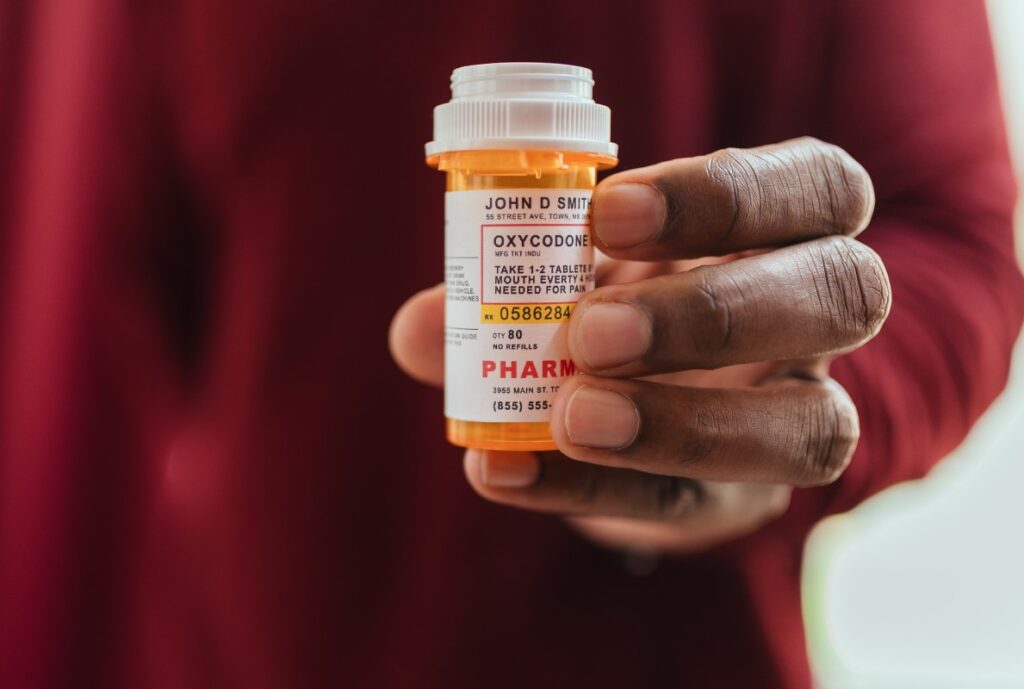What is Oxycodone?
Dependence on oxycodone is a widespread problem in the United States. This country, more than any other, has a difficult relationship with controlled prescription drugs. Opioids in particular have wreaked havoc on our country for several decades now with young people taking the brunt of the damage. It’s hard to say where the current opioid epidemic began, but the introduction of OxyContin by Perdue Pharma in 1996 was a watershed moment. This medication carried a powerful dose of oxycodone and combined with a marketing campaign to expand use, it accelerated the growth of oxycodone dependence in the U.S.
Oxycodone is a powerful semi-synthetic opioid painkiller that comes in several formulations that go by a variety of names. These include:
- Percocet
- Percodan
- OxyContin
- Oxycet
- Oxydose
- Xodol
- Oxy IR
- Roxicodone
- Roxybond
- Xtampza ER
What’s the Difference Between Oxycodone and Other Painkillers?
Oxycodone is one of the more potent opioid painkillers on the market and this both makes the likelihood of becoming dependent upon it higher and makes quitting more difficult. It is more powerful than hydrocodone (Vicodin, Lortab, Lorcet etc.) by about 50%. Oxycodone is the active ingredient in OxyContin.
The only opioids that you’re likely to encounter that are more powerful than oxycodone would be Fentanyl, Hydromorphone (Dilaudid), Oxymorphone (Opana) or Diamorphine (heroin). All of those are relatively uncommon, with the exception of illegally manufactured Fentanyl and heroin. All of these opioids combined are responsible for more than 100,000 overdose deaths annually in the United States.
How Do People Become Dependent on Oxycodone?
While prescribing doctors are much more savvy about the risk of dependence and opioid use disorders than they were in years past, they still find occasion to prescribe medications like oxycodone. Others may buy oxycodone illegally on the street or over the Internet or take someone else’s prescription medication.
Anyone who takes oxycodone for an extended period of time, even as prescribed, will develop a degree of physical dependence on it. Many will also develop a psychological dependence upon it. For many, this leads to a situation where they may begin taking more of their medication than prescribed. Either because it no longer seems to affect them the same way as before, or because they want the euphoric side effects. This is what is known as a opioid use disorder (OUD).
What is the Difference Between Physical and Psychological Dependence?
Being physically dependent upon opioids is a biological phenomenon. It will happen to anyone who takes powerful opioids, like oxycodone, regularly for an extended period of time (more than a month or so). When the drug is suddenly removed, that person will experience physical withdrawal symptoms.
Oxycodone Withdrawal Symptoms May Include:
- Excess yawning and watery eyes
- Fatigue
- Cramps and muscle spasms
- Sleeplessness
- Diarrhea
- Vomiting
- Cold sweats/chills
Psychological dependence on oxycodone arises when someone comes to rely on the drug for its euphoric side effects. They may become dependent on it to elevate their mood or to work or socialize. For many users, after a time oxycodone becomes a source of comfort and the idea of being without it is quite worrying. Psychological withdrawal symptoms are more or less the opposite of the effects most users seek. Depression, anxiety, cravings and irritability are among the most common.
How Can I Stop Using Oxycodone?
If you have become dependent on oxycodone, you aren’t alone. Opioid use disorders are not uncommon. It’s estimated that at least 2 million Americans are opioid dependent. The good news is that the opioid crisis in America has led to a tremendous amount of attention being put into successful treatment. Opioid use disorder treatment is better and more effective now than it has ever been. Seeking professional substance use disorder treatment offers the greatest chance for success. Medium and long-term outcomes for people who attend substance use disorder treatment programs are markedly more positive than for those who do not.
The Keys to Overcoming Oxycodone Dependence Include:
- A safe, comfortable medical detox
- Medication Assisted Treatment (MAT) for some
- 30+ days of treatment in a Partial Hospitalization Program
- 30-90 days of treatment in an Intensive Outpatient Program
- Ongoing recovery lifestyle management
One of the most essential components of successful recovery from oxycodone dependence is continuing abstinence supported by a program of recovery. It is important not to think of oneself as “cured” once formal treatment is completed. It’s much more useful to think of your opioid use disorder as “in remission”. The way to keep it at bay is with lifestyle changes. This goes far beyond simply abstaining from drugs and alcohol. Many people find 12-step fellowships or their alternatives helpful for maintaining a recovery lifestyle. The most important thing is that you maintain one and that you have a support system and are not left to manage your recovery alone.
Getting Treatment for an Opioid Use Disorder
Harmony Health Group is committed to providing top-notch care for individuals struggling with substance abuse and mental health issues. With state-of-the-art rehab facilities in Florida, Massachusetts, North Carolina, New Jersey, and Tennessee, we are well-equipped to address a wide range of concerns. Our programs cover not only drug and alcohol dependency but also anxiety disorder, dual-diagnosis, and other mental health conditions. We accept insurance from major providers such as Aetna, Cigna, Blue Cross Blue Shield, and United Healthcare, ensuring that our services are accessible to many. For those without insurance, we offer flexible private pay options, so you can discuss the cost of different treatments with us directly.
Our dedicated team of professionals is passionate about helping you achieve lasting recovery through personalized and evidence-based methods also offering complementary assessments and same day rehab to start. At Harmony Health Group, we believe everyone deserves a chance at a healthier, more fulfilling life. We invite you to reach out and learn more about our diverse treatment options. Taking that first step towards wellness is crucial, and we are here to support you every step of the way. Contact us today to start your journey to recovery and discover how our expert care can make a difference in your life.
If you or someone you love is living with Opioid Use Disorder (OUD) or another substance use disorder, Harmony Health Group wants to help. Our network of drug and alcohol treatment centers offer evidence-based dual-diagnosis care for all forms of substance use disorders. The first step in recovery is communication. A conversation with our admissions specialists will answer your questions and make you aware of the treatment options we have available for you or your loved one. Make the call today or contact us through our online form and the future will begin to look just a bit brighter.

